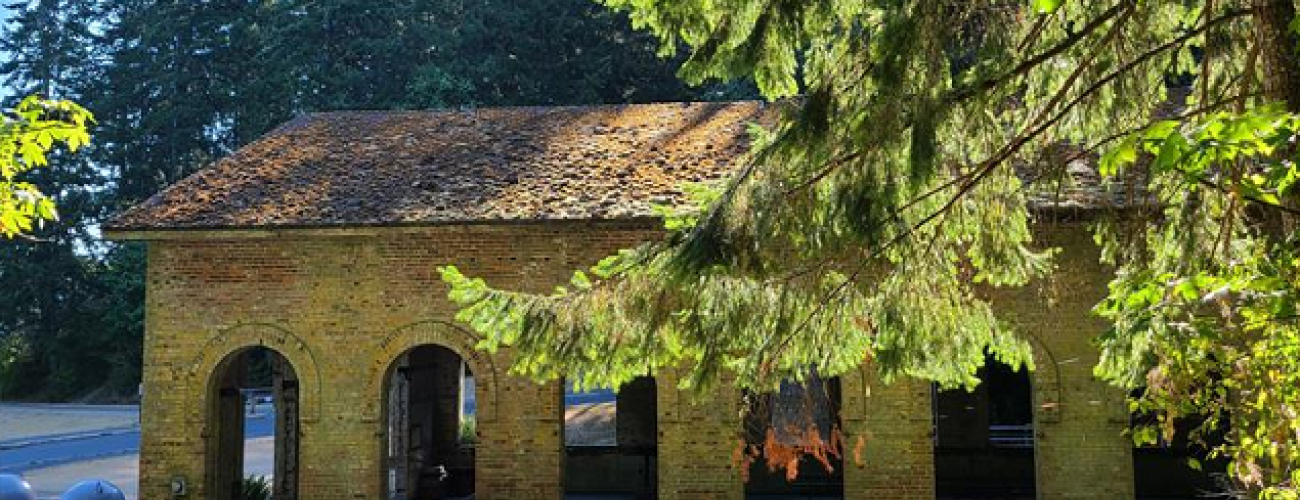Manchester State Park History
Manchester State Park is located on the site of a military reservation established for the defense of Puget Sound in 1899. The solid bedrock exposed at Middle Point in the park is an unusual feature on the Puget Sound coastline, found only at Rich Passage and a few areas on the western shore of Hood Canal. In the rest of the region, most bedrock is buried under a blanket of glacial debris left behind by the glaciers of the last ice age.
Indigenous Lands
The park’s location lies within the traditional territories of Coast Salish Indigenous people whose present-day descendants include members of the Suquamish Tribe. For thousands of years the lands and waters around Bainbridge Island and the Kitsap Peninsula have provided a habitat for a diverse community of life that forms the basis of their culture. Clam Bay, the body of water to the south of Middle Point, was noted in the original government survey as a “very large bed of fine clams,” long stewarded by Indigenous residents.
Local tribes ceded ownership of the area to the US federal government under duress in the Treaty of Point Elliott in 1855, keeping rights to harvest natural resources in their usual and accustomed places. After government land surveys of the area were completed in 1858, some of the land in today’s Manchester State Park passed into private ownership as Cash Entry patents. Seven acres of the rocky shores of Middle Point were purchased as a cash entry by George A. Meigs, the owner of the Port Madison lumber mill on Bainbridge Island, one of the principal mills on Puget Sound in the 1870s. Other parts of today’s park, including today’s campground loops, were granted by the federal government to the State of Washington in 1889 at statehood, part of millions of acres to be held in trust “for all the people” for support of public schools and other public institutions.
Coastal Defense
In the years after the end of the US Civil War, significant technological advances in heavy arms and naval capabilities made existing US coastal defenses obsolete. In 1885, US President Grover Cleveland appointed a military and civilian board to develop recommendations. The board was guided by US Secretary of War William Endicott. The 1886 report of the Endicott Board, as it became known, detailed the state of neglect of US defenses and advocated for a construction program to build fortifications at 29 sites, including Puget Sound.
The primary defense of Puget Sound was provided by the three forts at the entrance to Admiralty Inlet. Middle Point and Beans Point across Rich Passage on Bainbridge Island were acquired to provide a last line of defense for the Naval Shipyard at Bremerton.
The chief mission of the installation at Middle Point was to operate a minefield set in Rich Passage. A distinctive brick structure was completed in 1900 to store underwater mines (called “torpedoes” at the time) for the system. A concrete building, the “casemate,” was built nearby to house a kerosene-powered generator, an 80-volt D.C. storage battery made up of 40 glass or rubber boxes filled with sulfuric acid and wired in series, and the electric controls for the 19 mines suspended from cables in Rich Passage. Unlike contact mines, which immediately explode when struck by a floating object, the electrically controlled mines deployed across Rich Passage could be detonated on command, preventing an invading force from using empty vessels to clear the minefield. In addition, a gun battery was constructed to defend the buildings, but no guns were ever installed. Middle Point’s role as a coast defense site ended in 1910 when mine operations were moved across Rich Passage to Fort Ward on Bainbridge Island.
Making a Park
As early as 1928, the scenic shore at Middle Point was sought as a park site, but negotiations for purchase of the property did not begin until 1962. Funding for the purchase was provided by voter approval of Initiative 215 in 1964. The Washington State Parks and Recreation Commission purchased the land from the federal General Services Administration in 1970. Manchester State Park was dedicated on July 18, 1981. The US Navy continues a presence in the part of the Middle Point Military Reservation that was not transferred to Washington State Parks.
Sharing the histories of Washington’s state parks is an ongoing project. Learn more here.

